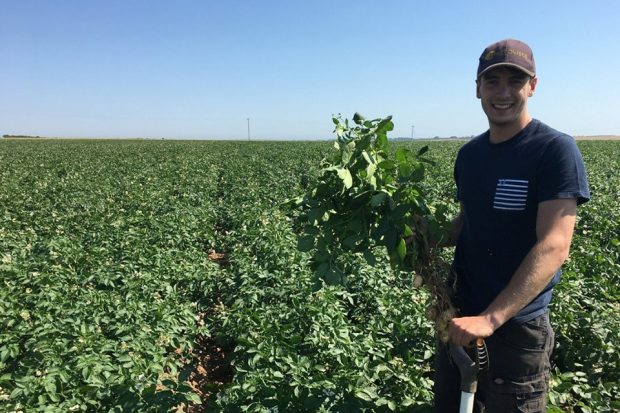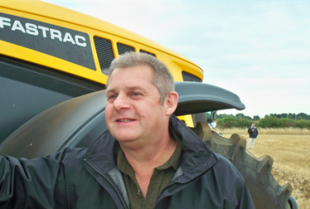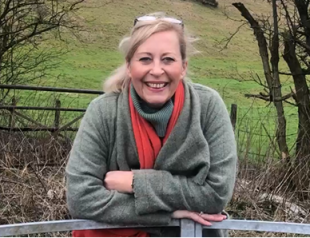The Rural Payments Agency took on administration of Countryside Stewardship in October 2018 and we have continued to work closely with the Catchment Sensitive Farming partnership. In today's guest blog we hear from Jonathan Payne, Linda Bratley and James Pick.
Jonathan works for the Catchment Sensitive Farming partnership, a successful partnership between Natural England, Defra and the Environment Agency.
James Pick is a proud farmer in picturesque North Yorkshire and East Riding. His family run a large mixed arable and cattle farm at Airy Hill Farm.
Linda Bratley is James Pick’s agent. She runs a company that provides a variety of services to farmers and landowners, including completion of Countryside Stewardship applications.
You can request support and approval from a Catchment Sensitive Farming Officer (CSFO) by downloading the form online from Catchment Sensitive Farming and sending the completed form to your local CSFO.
James Pick’s family run a mixed arable and cattle farm at Airy Hill Farm, in the Hertford catchment in North Yorkshire and East Riding. James wanted to explore a multi outcome Mid Tier application to make the farm more resilient against weather extremes, improve soil structure and help wildlife.
The erosion of loamy and clayey soils of the river was a challenge for James. Surface runoff and rapid flow of water through land drains carried fine sediment into the river system. This affected fish and other aquatic wildlife and increased the cost of treating drinking water.

James worked together with his agent, Linda Bratley, and his local Catchment Sensitive Farming Officer (CSFO), Jonathan Payne, to make a successful Countryside Stewardship application last year.
We’ve put together three easy steps to help you with your Countryside Stewardship application, based on James, Linda and Jonathan’s experience. Follow these steps to submit an application that is good for your farm and good for the environment.
Three easy steps
- Use MAGIC to check the land is in a high priority area and identify target pollutants
- Choose the right options or items to address the target pollutants
- If you need support or approval get in touch with your local CSFO now
Taking one step at a time
- Use MAGIC to check the land is in a high priority area and identify target pollutants
Catchment Sensitive Farming support and approval is available in high priority areas for improving water quality in England.
Use MAGIC to:
- check the holding is in a high priority area and eligible for CSFO support. Find your site using the address bar in the top left-hand corner (using a postcode is easiest). Once you have found your site, select Countryside Stewardship Targeting & Scoring Layers>Water. If your site is in an area marked as red then it is within a high priority area. Your local CSFO can also advise if your farm is a priority farm
- check the target pollutants for the area. From the left-hand menu select the various items under Water, to see if your site is within them. Ammonia is an air quality target pollutant across all the high priority areas.

Jonathan says,
"Check your land parcel is eligible, identify the right options and the evidence needed for them. Your local CSFO can help you create a targeted application that supports the aims of the Countryside Stewardship scheme."
2. Choose the right options or items to address the target pollutants
Use the relevant Countryside Stewardship manual to identify the right capital items or land management options to address the pollutants and if they need CSFO approval.
There are handy tables in Annex 2 of the Mid Tier manual and Section 5 of the Capital Grants scheme manual which show:
- options or items
- pollutants they address
- if they need support or approval from a Catchment Sensitive Farming Officer
Jonathan says,
Remember capital items should be practical and proportionate to the size of the problem
3. If you need support or approval get in touch with your local CSFO now
Send your local CSFO the completed Request for support and approval from a CSFO form at least 6 weeks before you intend to apply. Natural England will not consider request forms that arrive late.
Remember your CSFO will look at where the pollutant is coming from, how it’s moving and where it’s going to impact water or air quality.

Linda says,
“Your local CSFO is there to help you submit the best application for your farm and for the environment. Help them do this by giving as much information as possible, especially if this is the first time you are contacting your local CSFO. It’s very much a team effort between all parties.”
Working together
By working together with Linda and Jonathan last year, James now has a rounded Mid Tier application which works for the farm and the environment.
James says,
Our agreement went live 1 January 2021. In the years to come we’re excited about seeing pollinators feeding on the nectar mixes, birds feeding on wild bird seed mixes and improves soil structure. It will benefit us all to see less sediment moving from the farm into the watercourse. We now have an agreement which will work for our farm and the environment – improving biodiversity across the local landscape.
The latest date to request support and approval from your local CSFO for Mid Tier applications is Friday 18 June.
Please note for Capital Grants, you should have already contacted your local CSFO by 19 March.